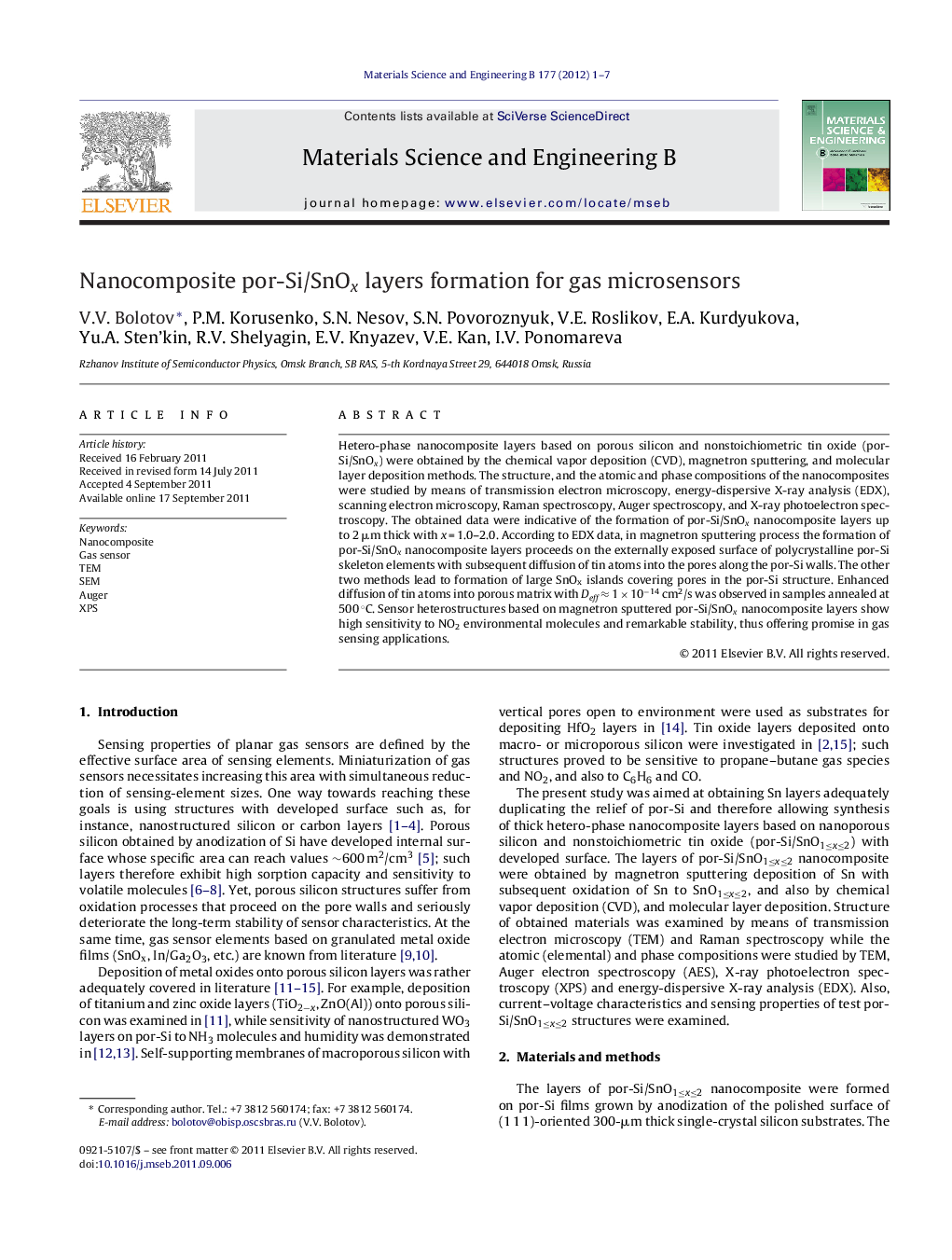| Article ID | Journal | Published Year | Pages | File Type |
|---|---|---|---|---|
| 1529657 | Materials Science and Engineering: B | 2012 | 7 Pages |
Hetero-phase nanocomposite layers based on porous silicon and nonstoichiometric tin oxide (por-Si/SnOx) were obtained by the chemical vapor deposition (CVD), magnetron sputtering, and molecular layer deposition methods. The structure, and the atomic and phase compositions of the nanocomposites were studied by means of transmission electron microscopy, energy-dispersive X-ray analysis (EDX), scanning electron microscopy, Raman spectroscopy, Auger spectroscopy, and X-ray photoelectron spectroscopy. The obtained data were indicative of the formation of por-Si/SnOx nanocomposite layers up to 2 μm thick with x = 1.0–2.0. According to EDX data, in magnetron sputtering process the formation of por-Si/SnOx nanocomposite layers proceeds on the externally exposed surface of polycrystalline por-Si skeleton elements with subsequent diffusion of tin atoms into the pores along the por-Si walls. The other two methods lead to formation of large SnOx islands covering pores in the por-Si structure. Enhanced diffusion of tin atoms into porous matrix with Deff ≈ 1 × 10−14 cm2/s was observed in samples annealed at 500 °C. Sensor heterostructures based on magnetron sputtered por-Si/SnOx nanocomposite layers show high sensitivity to NO2 environmental molecules and remarkable stability, thus offering promise in gas sensing applications.
